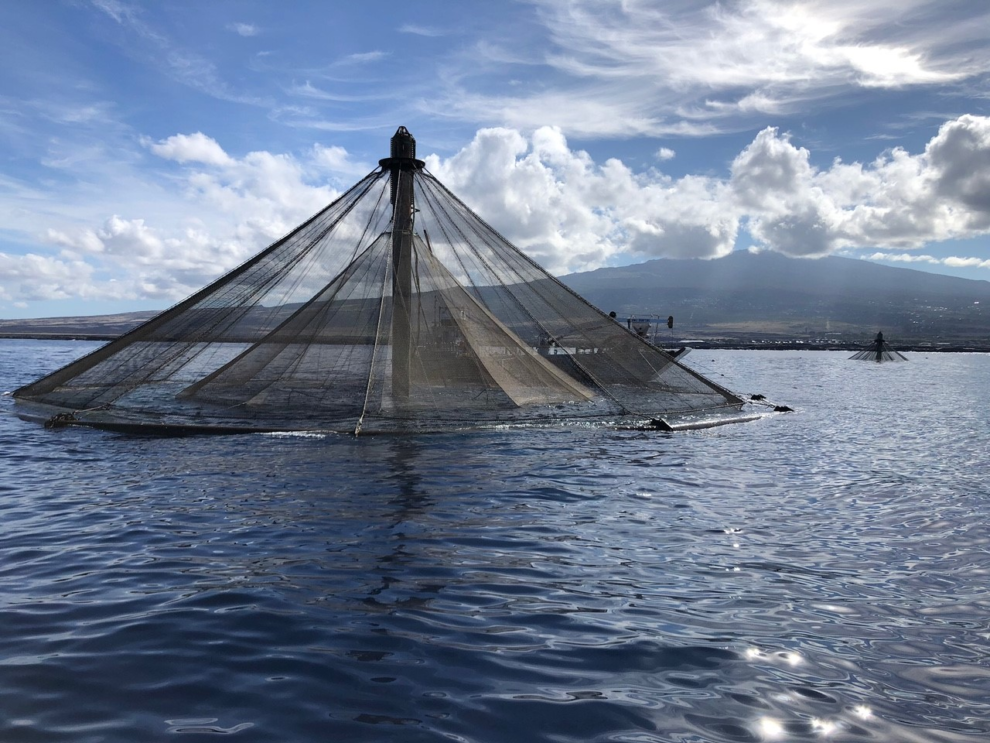Hawaii’s $90 million aquaculture industry is predicting significant growth over the next five years and is calling on legislators to help.
Sales of Hawaii’s aquaculture products jumped by 12% in 2022 and production has more than tripled in the past 20 years, according to the U.S. Department of Agriculture, bucking the statewide trend of declining agriculture.
The potential for the industry is boundless, industry insiders told the Hawaii AgriFood Summit last week, and aquaculture has the potential to diversify Hawaii’s economy and increase local food production.

Algae and fish farming featured prominently in discussions at the two-day summit, with speakers considering everything from the use of algae-based feed for cattle to developing technologies for more sustainable fish farms.
“I often think that we don’t get enough credit for how much we’ve achieved in aquaculture,” Hawaii Aquaculture and Aquaponics Association president Ron Weidenbach said at the conference.
The Value Of Algae
Hawaii has been responsible for some of the biggest innovations in global aquaculture, including developing the $30 million per year export industry with SPF brood shrimp.
It also hosts the only offshore fish farm in the country.

And one of the state’s most valuable crops overall is algae, worth almost $45.4 million last year, according to USDA.
Most of those sales are in the form of spirulina supplements, Pacific Business News reported, but more avenues need to be explored to cultivate and direct farmed shellfish, fish and algae into the food system, says Cheng-Shen Lee, executive director of the Center for Tropical and Subtropical Aquaculture at the University of Hawaii.
If the industry’s sales continue to grow at around 12%, it would be worth $230 million in five years.
“I think that’s achievable and that would put us up as the No. 1 agricultural commodity,” Weidenbach said.
But the aquaculture industry recognizes that it needs to gain favor in the Legislature to help fuel its growth.
While it is unlikely that Hawaii-grown and farmed fish, shellfish and algae will meet ever meet local demand, Lee says, it can still increase production and boost the state’s food security.
But there needs to be a coordinated effort.
“You cannot just rely on government or producers or researchers. In order to move forward we need to work together,” Lee said.

Cultivating The Brood Stock
The state has provided little support to the industry lately.
Just two staff are dedicated to aquaculture under the Department of Agriculture; that’s been the case for more than 10 years.
But lawmakers funded four more positions last year that are yet to be filled.
A suite of aquaculture-related bills were introduced at the Legislature during the last session.
They all died.
Sen. Donovan Dela Cruz introduced the most controversial bill, one that would have shifted DOA’s aquaculture resources and staff from DOA to the Agribusiness Development Corp. It received almost unanimous pushback from fish farmers and state agencies.
DOA Chair Sharon Hurd told lawmakers that to help realize the potential for aquaculture, the agency would need just short of $31.5 million for facilities and staff.
“Every piece of the supply chain, we have,” Hurd said in an interview. “We just need the resources to ramp it up.”
Among the agency’s priorities is creating a dedicated aquaculture division, which would help them better prioritize the industry’s needs, as well as creating an aquaculture advisory group under the DOA.
Bills addressing those priority areas would be introduced in the coming legislative session, Hurd said.
Ready For Its Time In The Sun
With local agricultural production dwindling, aquaculture can play a greater role in local food security, according to Hawaii AgriFood Summit co-creator Jim Wyban.
But “we’re trapped in our legacy,” Wyban said.
Investing in aquaculture would benefit the overall agricultural industry, he says.

Hawaii has proven attractive to aquaculture research over the decades in part because of the the 870-acre Hawaii Ocean Science and Technology Park on the Big Island, which is pre-permitted for tenants’ research and development.
Many in the industry would like to see the science and technology park replicated on each of Hawaii’s main islands, as the original has created more than 600 jobs and has a $150 million annual economic impact.
Global interest in Hawaii’s aquaculture means the industry’s worth is only going to increase, according to Greg Barbour, executive director of the Natural Energy Laboratory of Hawaii Authority, which oversees the park.
The park has grown to have 55 tenants and its growth was hardly impacted by the pandemic, Barbour says.
“We talk about economic drivers and stuff like that, but we have just proven that this sector is very resilient,” Barbour said.
But to gain better traction across Hawaii, the industry needs to make itself better known.
“The problem is people don’t know what aquaculture is. We need to do a better job,” Barbour said.
Source : CivilBeat











